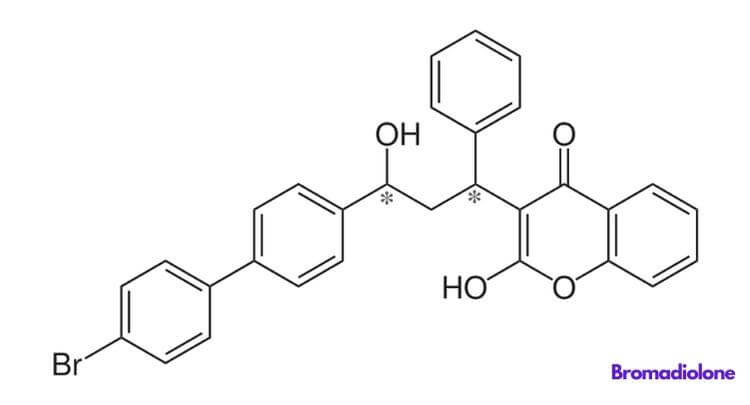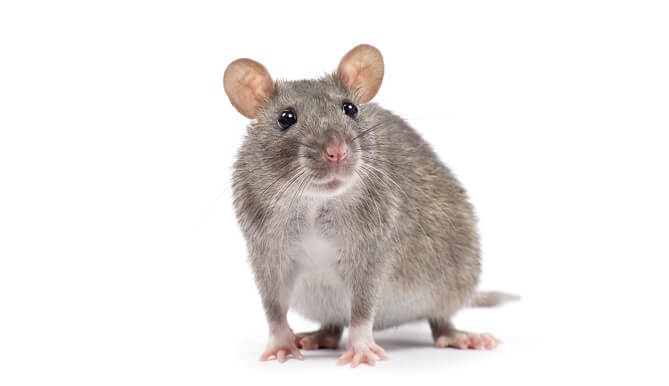Bromadiolone Rodenticide

Rodent infestations can be a homeowner’s worst nightmare. From the haunting scratch of tiny feet within the walls to the nibble marks on precious belongings, rodents pose both a health hazard and property risk.
While numerous rodent control methods are on the market, Bromadiolone stands out. Here’s a comprehensive look into this powerful rodenticide, examining its origin, effectiveness, benefits, and potential drawbacks.
Bromadiolone Overview
| Features | Details |
|---|---|
| Type | Anticoagulant Rodenticide |
| Active Ingredient | Bromadiolone |
| Mode of Action | Decreases Vitamin K, prevents blood clotting |
| Benefits | Single-feed kill, versatile usage |
| Drawbacks | Needs good attractant |
| Safety | Toxic to humans, pets; use with precautions |
| Antidote (in case of ingestion) | Prolonged treatment with Vitamin K1 |
| Popular Products | Contrac Blox, Contrac Rodent Bait with Lumitrack & more |
Bromadiolone was registered in the US in 1980, marking a pivotal moment in rodent control. Coined the “super-warfarin,” this anticoagulant rodenticide has an unparalleled ability to counteract rodents resistant to other baits. The odorless powder, usually white to yellow, is used primarily to combat rats and mice.
Mechanism of Action
Understanding how Bromadiolone works is crucial. As a second-generation anticoagulant, its primary function is depleting Vitamin K levels in the blood. Vitamin K is pivotal for blood clotting.
Once ingested by rodents, Bromadiolone inhibits the recycling of this vital vitamin. Consequently, rodents suffer internal bleeding, leading to their demise.

Key Benefits
- Quick Action: Many rodenticides require multiple feedings to be effective. Not Bromadiolone. Often, a single dose is lethal, rendering it efficient and fast-acting.
- Versatile Use: Its use isn’t limited to common pests like rats and mice. Bromadiolone is also effective against field rodents, opossums, and even raccoons.
- Widespread Application: From homes and factories to transport vehicles like ships and aircraft, Bromadiolone can be used almost anywhere.
Drawbacks
While it has manifold advantages, Bromadiolone isn’t without flaws:
- Taste: On its own, Bromadiolone isn’t particularly appetizing to rodents. Hence, formulating it with the right attractant is crucial.
- Safety Concerns: High toxicity to humans, pets, and other wildlife necessitates careful handling and application.
Safety Measures
Using Bromadiolone warrants caution. Always opt for a tamper-resistant bait station, especially in households with children or pets. Always wear gloves and avoid mouth contact.
Store it away from edibles, ensuring no contamination of food or water. In any case of accidental ingestion, seek medical help immediately, as prolonged Vitamin K1 treatment will be vital.
Performance Expectations
Bromadiolone targets the liver upon ingestion, blocking the synthesis of vitamin K-dependent clotting factors. As blood loses its ability to clot, it seeps into artery walls. Death, mainly due to blood loss, follows within days.
Featured Products
- Contrac Blox Rat Mouse Poison Bait: Effective for various rodent types, these blocks fit numerous bait stations, offering results within days.
- Contrac Rodent Bait with Lumitrack: A textured bait, it entices rodents. The inclusion of Bromadiolone ensures effectiveness from a single feed.
- Contrac Pellet Place Pacs Rodent Bait: Pre-made for convenience, they tackle diverse rodent species, ensuring death within days.
Conclusion
In conclusion, Bromadiolone offers a compelling choice for those battling rodent infestations. Using wisely and with necessary precautions provides a swift and effective solution to a pervasive problem. However, always prioritize safety and ensure proper storage and application. The battle against rodents just got a potent ally.

James E. Butkovich, Pest control maven with a knack for eco-friendly & Chemical solutions. Blogger with a mission to make homes pest-free, one post at a time.